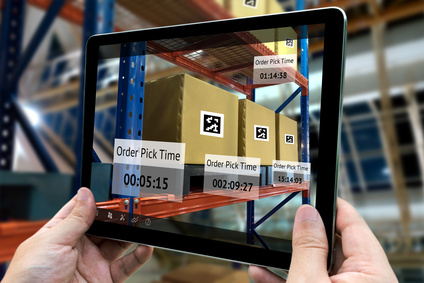Supply chain management requires enterprises to deal with diverse data sets. Be it truckloads of structured data or even unstructured bits of information, supply chains have long been driven by quantifiable indicators and statistics. However, the revolutionized industry urges organizations to inculcate real-time analytics which in turn brings them a step closer to the concept of Big Data.
Adopting Big Data Analytics: An Innovative Start or A Lingering Issue?
Implementing Big Data within a supply chain schema isn’t expected to bear fruits overnight. The application requires an influx of data forces, mass validations and development systems for deriving vital insights regarding situations, products and other metrics involved. This, being a multi-faceted approach, requires customers and professionals to be patient. Therefore, it wouldn’t be wrong to assume that Big Data Analytics has arrived but companies are still falling behind when Big Data insights are being looked at.
In simpler words, the modern day application of Big Data analytics— targeting supply chain management— requires a deeper and surely a clearer sense of approach. It isn’t surprising to see that many companies have been slightly skeptical when it comes to implementing Big Data analytics within the supply chain hierarchy as compared to other working areas like manufacturing and marketing. Although, analytics is innovative to work with, the apprehensions are still hindering seamless adoptions.
Driving Efficiencies Home
There are several factors pertaining to supply chain management which require immediate attention. Be it the vehicle conditions, machineries associated with a setup or even inventory solutions— there are a host of structured intricacies to deal with.
The presumably successful application of Big Data has been quite significant in driving better sales as many enterprises have already embraced the concept— wholeheartedly.
Let us quickly analyze a few aspects that concern supply chain management and the improvements bestowed upon— courtesy Big Data analytics:
- Handling Unstructured Data Sets— The likes of transportation logistics, inventory management and even warehouse management hardly offer structured data. Having Big Data analytics at the helm allows companies to use clocked digital cameras for monitoring changes, stock levels and a host of other requirements which are unstructured in nature.
- Dealing with Forecasting— Flexibilities offered by Big Data analytics work perfectly when it comes to supply chain forecasting. The existing camera data can be paired with diverse algorithms and used for predicting stock management scenarios. This technology is suitable for distribution centers and warehouses where resupplies need to be essentially predicted— sans human interactions.
Pillars of Big Data Analytics
Analytics synonymous to Big Data needs to have two focal points— making it usable and scalable at the same time. Being ‘Predictive’ is the first pillar of Big Data science which tells enterprises about the course of action. Now with the data sets available, the analytics needs to be ‘Prescriptive’ as well— further determining the modus operandi associated with a specific supply chain metric.
Needless to say, every supply chain setup is better off with Big Data analytics in place and it’s time enterprises start identifying the true potential of this technology which has already been hailed by the customers.
Dealing with Unstructured Data
While analytics caters perfectly to structured data sets with defined fields, it is challenging to pair up Big Data insights with unstructured bits of information. One such example would be monitoring shelf space in real time. This is one aspect of supply chain management that doesn’t come with a predefined layout. Shelf space might vary with time and the only way analytics would work is by implementing sensors for detecting logos and brand names— based on visibility.
Unstructured data shall only make sense if collected in an innovative manner. The idea here is to gauge the sales systems for points of resonance. With the influx of Big Data logic, supply chain managers have started looking at the underrated data elements— including the likes of forecasting, social media and weather. These elements have a massive impact on sales and the inclusion of analytics is expected to leverage them in the best possible manner.
As with every aspect of industrial proceedings, Big Data is slowly but steadily making inroads into the world of supply chain and logistics. Moreover, even enterprises are finding this technology easy to use with the sudden surge in the volume of unstructured data sets— clubbed with the usual levels of traditional data analysis. Big Data usage minimizes human indulgence and readily focuses on the broader time frame in hand.
Overall, it’s all about using data sets smartly and only Big Data analytics can help enterprises achieve the same.

